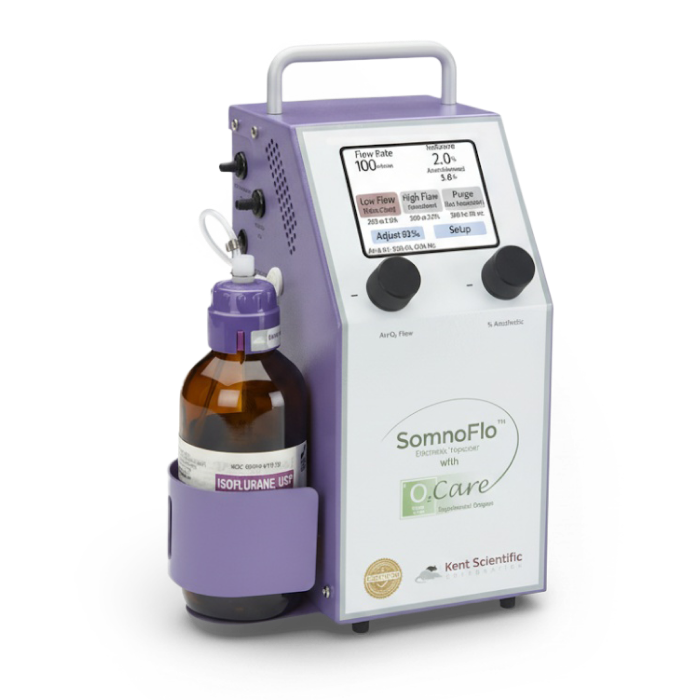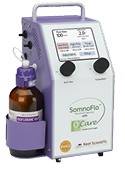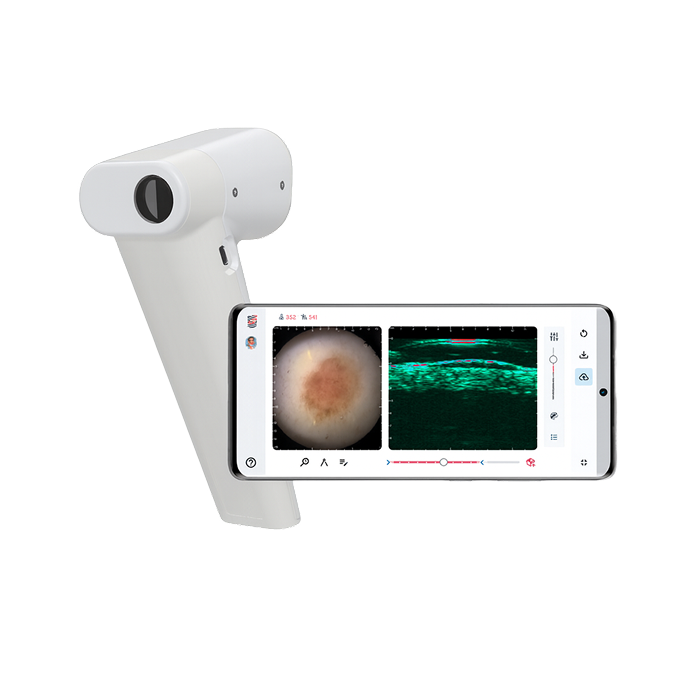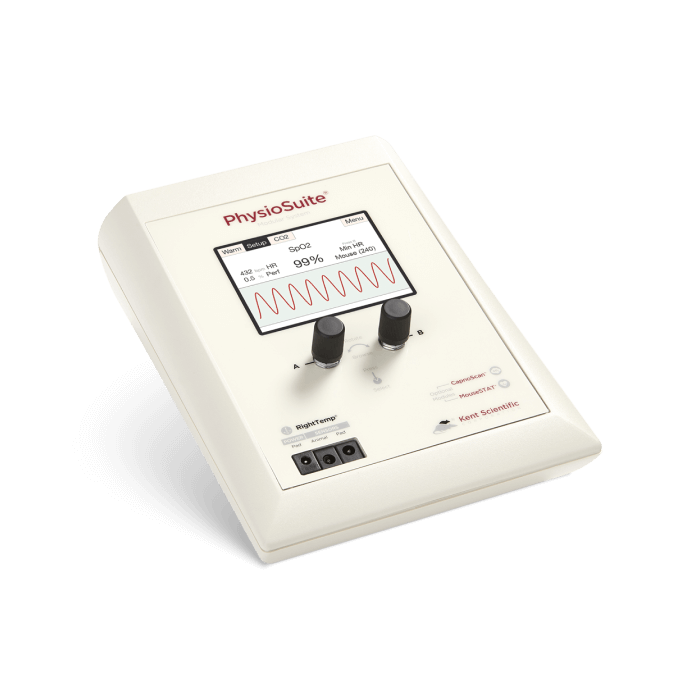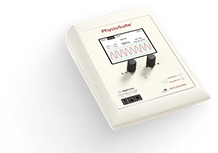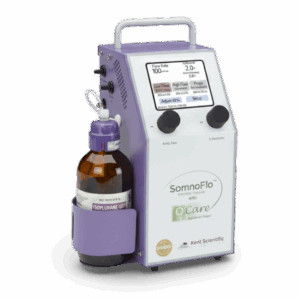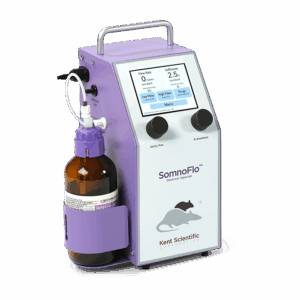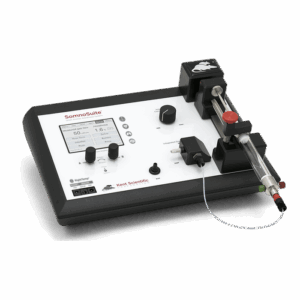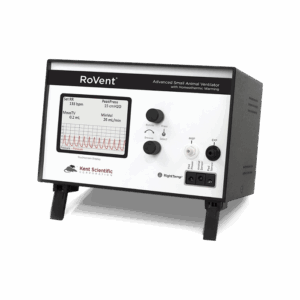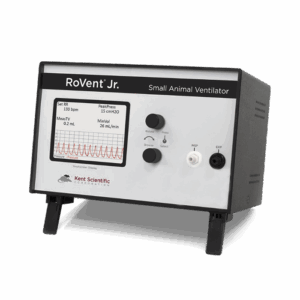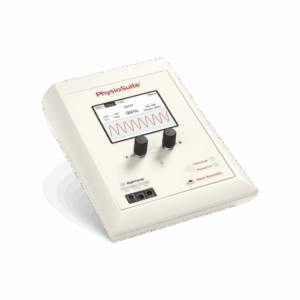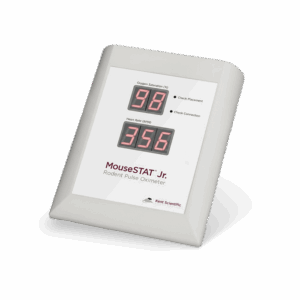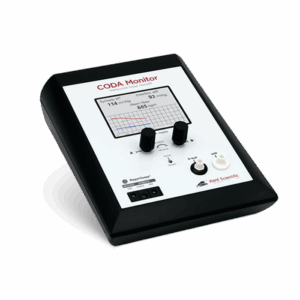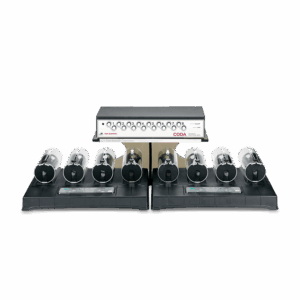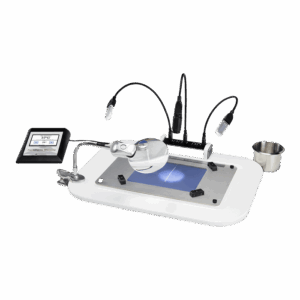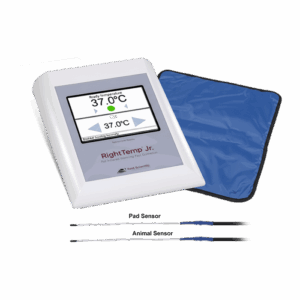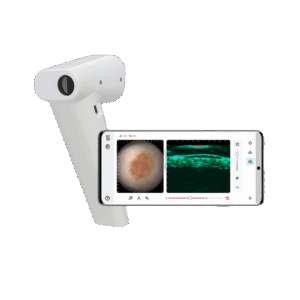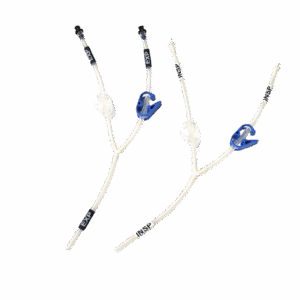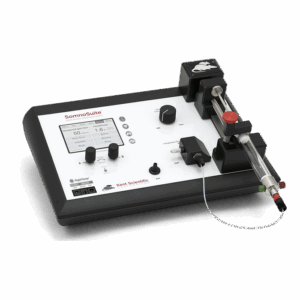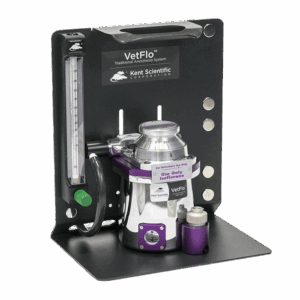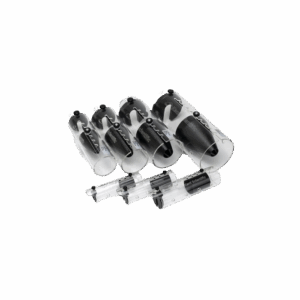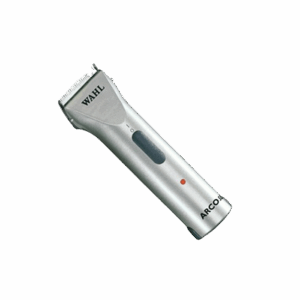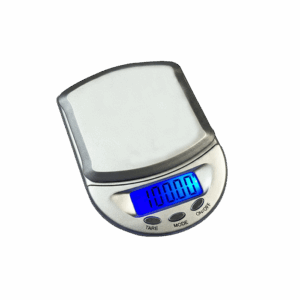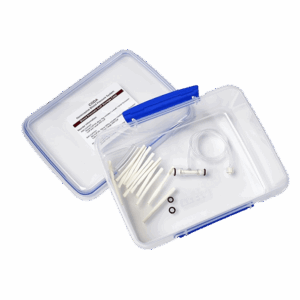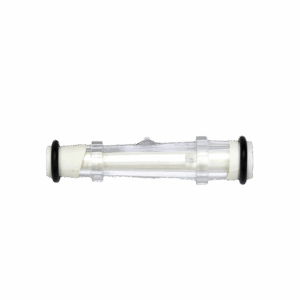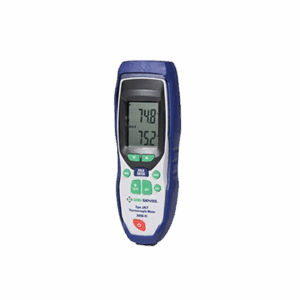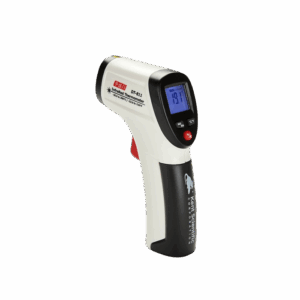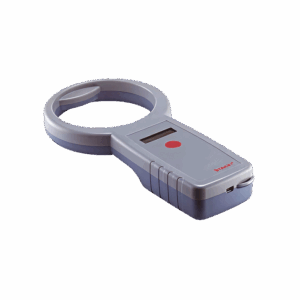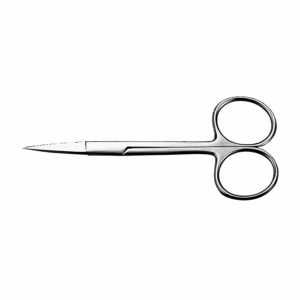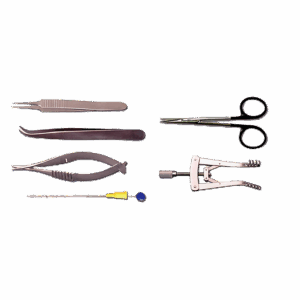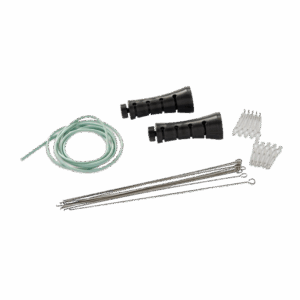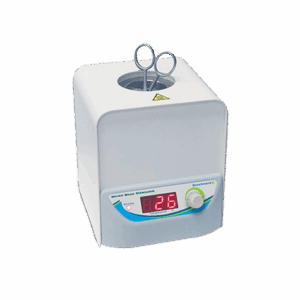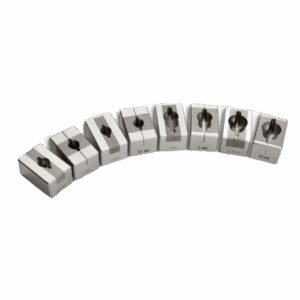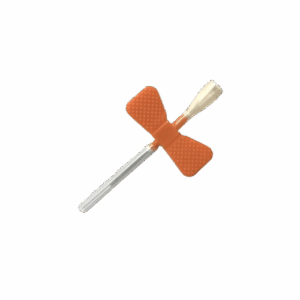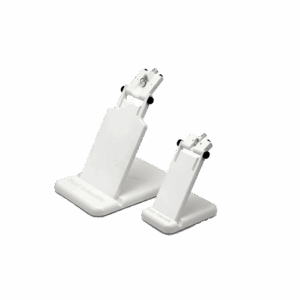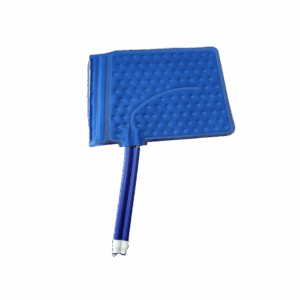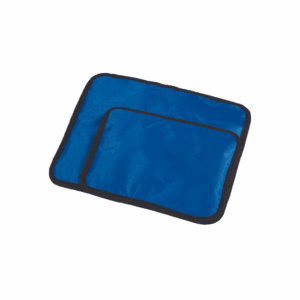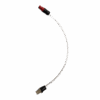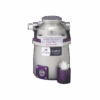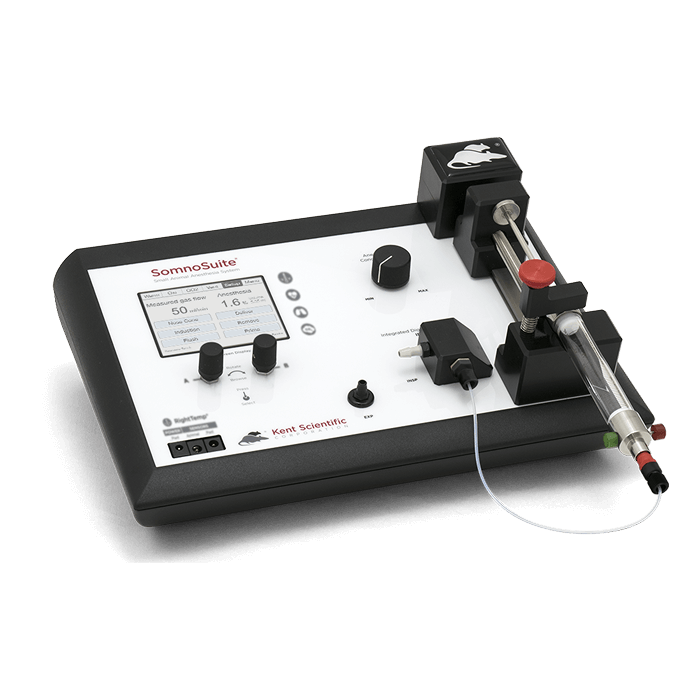
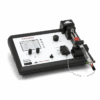
SomnoSuite®
Low-flow anesthesia system
SomnoSuite® is Kent Scientific’s innovative low-flow anesthesia delivery system designed specifically for mice and rats. Unlike traditional vaporizers, the SomnoSuite is engineered with a precision syringe pump and integrated digital vaporizer which uses either room air or compressed gas to deliver anesthesia at low flow rates proportionate to the animal’s size. Using less anesthesia not only benefits the animal during procedures, but significantly reduces the risk of exposure to lab personnel from waste anesthesia gas.
Every SomnoSuite ships with RightTemp®.
Need Help? Chat with an Expert
Not sure which modules are right for you?
Our team can help you with product details, configurations, and quotes.
What you get with SomnoSuite
Flow Rates from 25 mL to 1 L
Save money by using less than 1mL of isoflurane/hour with typical use
No Servicing or Calibration Needed
Electronic vaporizers utilizing active vaporization technology do not require annual maintenance and include a no-calibration certificate for facility inspections
Integrated digital vaporizer
Auto calculates flow rate based on animal weight
Built-In Air Compressor
Uses room air or compressed gas
Easily Integrates Into Stereotaxic Setups
Use your own anesthesia mask or use one of ours
Multi-Animal Capability
Greater efficiency – Our clinical department will be pleased to review your study protocol to confirm that our product will meet your specific study requirements
Modular Capability
Multiple options for integrated physiological monitoring for every application and pricepoint
Real-Time Recordings and Data Output Capabilities
Compatible with third-party data acquisition software, such as LabChart, Spike2, etc.
Induction Chamber Flush
Minimizes waste anesthetic gas exposure
Intuitive Touch Screen Control
The easy to use multi-parameter touch screen display shows vital signs
Complies with Regulatory Guidelines
Low Flow vaporizers use less anesthetic and reduce exposure and waste anesthetic gas
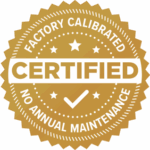
Smaller footprint
Significantly smaller footprint compared to traditional vaporizer and stand, further reduced by combining additional modules including RoVent and MouseSTAT
Safer for the Animal
Digital dial control for precise delivery and safety
Safer for the technician
With such a small amount of anesthetic and oxygen used there is very little waste gas exposure risk
5 Safety Alarms
What your peers say
SomnoSuite videos
Playlist
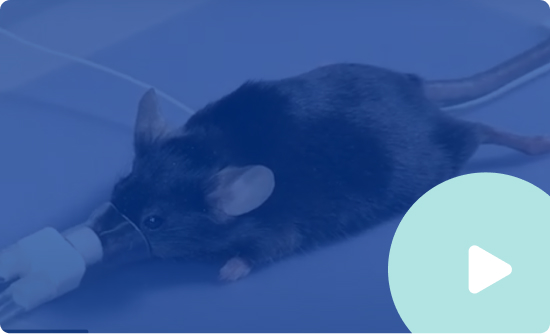
0:16

0:16

0:16

0:16
About SomnoSuite
Overview
SomnoSuite is Kent Scientific’s innovative low-flow anesthesia delivery system designed specifically for mice and rats.
Unlike traditional vaporizers, the SomnoSuite is engineered with a precision syringe pump and integrated digital vaporizer which uses either room air or compressed gas to deliver anesthesia at low flow rates proportionate to the animal’s size.
Using less anesthesia not only benefits the animal during procedures, but significantly reduces the risk of exposure to lab personnel from waste anesthesia gas.
Uses less anesthetic gas
The SomnoSuite is specifically designed to be used with mice and rats. It is pre-calibrated for use with both isoflurane and sevoflurane. Typical “human-sized” vaporizers on the market today waste more anesthetic gas than you would actually use in a given procedure.
Using the SomnoSuite during a typical 30-minute procedure at a gas concentration of 2.5% isoflurane results in using less than .3 mL of isoflurane! It is capable of anesthetizing up to 2 mice simultaneously. The internal pump allows you to use room air or you may hook it directly to a compressed gas source. If you need to anesthetize more than two mice or multiple
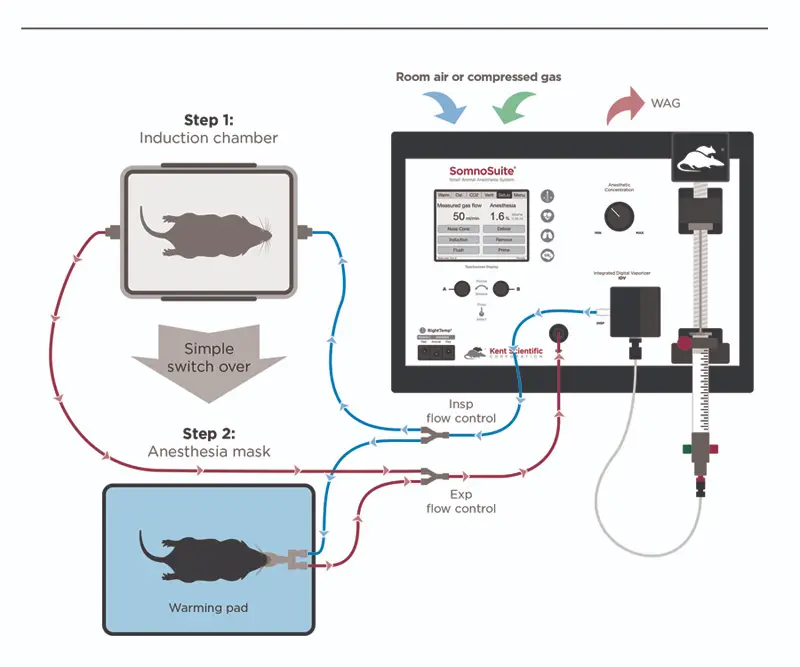
Syringe selection
For optimum precision, response and consistency of anesthetic delivery, we recommend using the 5mL syringe size for mice and the 10mL syringe size for rats. Because mice require very low flow rates for anesthetic maintenance, very little liquid anesthetic is needed. A larger syringe at the same flow rate will cause the syringe driver mechanism to run more slowly, causing pulsatile flow of anesthetic.
For example, for a 30g animal with a calculated maintenance flow of 36mL/min set at 1.5% isoflurane, the syringe pump moves approximately 4 pulses per second with a 5mL syringe, and 2 pulses per second with a 10mL syringe. Although the animal’s response time to changes in anesthetic tends to occur over a few minutes, a more pulsatile anesthetic flow rate may in some cases introduce variables related to anesthetic maintenance.
For example, for a 30g animal with a calculated maintenance flow of 36mL/min set at 1.5% isoflurane, the syringe pump moves approximately 4 pulses per second with a 5mL syringe, and 2 pulses per second with a 10mL syringe. Although the animal’s response time to changes in anesthetic tends to occur over a few minutes, a more pulsatile anesthetic flow rate may in some cases introduce variables related to anesthetic maintenance.
Base system includes
- Integrated touch-screen display
- Internal memory for data storage
- Mini-USB for data output
- Anti-spill, anti-vapor bottle top adapter
- Two accessory adapter
- WAG canister and holder
- 1-Year 100% Parts & Labor Standard Warranty
- Premium Warranty Available
How much could you save with SomnoSuite?
Calculate your savings using a SomnoSuite Digital Vaporizer vs. Traditional Vaporizer:
Calculation based on:
- Flow rate of 0.2 L/min for SomnoSuite & 2 L/min for traditional
- Iso concentration of 2%
- Annual calibration cost of $200 - $300* for traditional.
- Average cost of a typical 250 mL bottle size of Iso is $35: Volume x $35 x 4 = $Cost/year
- Compressed gas fees vary from academia to pharma. Most tanks are rented with fees for tank fill/replacement averaging ~ $1,000/year.
- Calculations are based upon a specific customer request, and can be adjusted to other specific uses.
Extend your SomnoSuite's capabilities with the following add-on modules
Every SomnoSuite ships with RightTemp, and is configurable with 3 add-on modules:
SomnoSuite with RightTemp®
Temperature monitoring & homeothermic control module
The RightTemp Temperature Monitoring and Homeothermic Control system included with SomnoSuite allows you to accurately monitor and maintain rat and mouse body temperature.
Simply set your desired core body temperature and the system will automatically control the warming pad so the animal’s core temperature never goes above or below your set temperature.
Learn more about RightTemp.
RoVent®
Advanced small animal ventilator
The RoVent® small animal ventilator is ideal for mice, rats and guinea pigs up to 1,250 grams.
The ventilator is fully automatic, simply enter the animals weight and press run. You have the ability to control ventilation by either volume or pressure.
Integrated PEEP, automated sigh breaths, and other advanced features make the RoVent suitable for a wide range of procedures.
Learn more about RoVent.
MouseSTAT®
Pulse oximeter and rat & mouse heart rate monitor module
Originally designed for use on mice, the MouseSTAT® Pulse Oximeter and Heart Rate Monitor Module can be used effectively on any small animal with the available different sized sensors.
Since the paws of small rodents are typically nude, no shaving or hair removal is required.
MouseSTAT accurately measures pulse oximetry on anesthetized or awake immobile animals with heart rates up to 900bpm.
Learn more about MouseSTAT.
CapnoScan®
End-tidal CO2 monitor module
CapnoScan® provides real-time capnography and sidestream sampling. To obtain end-tidal CO2 measurements, CapnoScan requires the animal be intubated and ventilated.
Learn more about CapnoScan.
Scientific publications
Analysis of the distribution of vagal afferent projections from different peripheral organs to the nucleus of the solitary tract in rats
Continue ReadingChemogenetic emulation of intraneuronal oxidative stress affects synaptic plasticity
Continue ReadingCognitive and behavioral effects of whole brain conventional or high dose rate (FLASH) proton irradiation in a neonatal Sprague Dawley rat model
Continue ReadingConservation of locomotion-induced oculomotor activity through evolution in mammals
Continue ReadingDevelopment of the Periventricular Nucleus as a Brain Center, Containing Dopaminergic Neurons and Neurons Expressing Individual Enzymes of Dopamine Synthesis
Continue ReadingDissociation of spatial and object memory in the hippocampal formation of Japanese quail
Continue ReadingLongitudinal in Utero Analysis of Engrailed-1 Knockout Mouse Embryonic Phenotypes Using High-Frequency Ultrasound
Continue ReadingWarranty information
| SomnoSuite® with RightTemp® | Standard | Extended | Premium |
|---|---|---|---|
| US & Canada | No Charge | $595 | $1,750 |
| Coverage Period | 1 Year | Additional 2 Years | Additional 2 Years |
| Controller | |||
| Loaner Equipment (for use under warranty repairs) |
$450/Week
|
$450/Week
|
Unlimited
|
| Loaner Equipment — Shipping (for use under warranty repairs) |
Next Day
| ||
| Onsite Installation & Training |
Training
| ||
| Expedited Repairs (any repairs) |
24 hours
|
| SomnoSuite® with RightTemp® and MouseSTAT® | Standard | Extended | Premium |
|---|---|---|---|
| US & Canada | No Charge | $995 | $1,995 |
| Coverage Period | 1 Year | Additional 2 Years | Additional 2 Years |
| Controller | |||
| Loaner Equipment (for use under warranty repairs) |
$450/Week
|
$450/Week
|
Unlimited
|
| Loaner Equipment — Shipping (for use under warranty repairs) |
Next Day
| ||
| Onsite Installation & Training |
Training
| ||
| Expedited Repairs (any repairs) |
24 hours
|
| SomnoSuite® with RightTemp®, MouseSTAT®, and RoVent® | Standard | Extended | Premium |
|---|---|---|---|
| US & Canada | No Charge | $1,150 | $2,250 |
| Coverage Period | 1 Year | Additional 2 Years | Additional 2 Years |
| Controller | |||
| Loaner Equipment (for use under warranty repairs) |
$450/Week
|
$450/Week
|
Unlimited
|
| Loaner Equipment — Shipping (for use under warranty repairs) |
Next Day
| ||
| Onsite Installation & Training |
Training
| ||
| Expedited Repairs (any repairs) |
24 hours
|
Note:
- Damage or failures that result from abuse, negligence, or misuse are not covered under warranty.
- Expedited repair time starts the business day after product is received and ends when shipped to customer.
- Customer is responsible to inform Kent Scientific when making a warranty claim.
- Extended warranties purchased after the original system sale are subject to approval. It may be necessary to have the controller returned for inspection before the purchase of the extended warranty.
Need Help With Your Order?
Our product specialists are here to help with additional information on our products, grant proposals, orders and more. Give us a call today!
Call 888-572-8887
Help & Support
Have questions or need assistance? Our friendly team is ready to help with orders, shipping, or product care. Contact us anytime—we’re just a click away!
We reply fast, usually in 24 hours.
FAQs
Are the MouseSTAT Pulse Oximeter Sensors CT compatible?
Yes, all MouseSTAT sensors are CT compatible.
Are there limitations to using room air with the SomnoSuite?
The SomnoSuite can be used for long procedures with room air. Per regulatory guidelines, it is recommended to closely monitor physiological parameters for the duration of the procedure. In some cases, the addition of supplemental oxygen or mechanical ventilation may be useful.
Can I output data?
Yes, there are multiple options to record and manage data. The system includes one analog output (for a single parameter), or you may export all parameters digitally via mini-USB.
Is the SomnoSuite compatible with stereotaxic masks?
Yes. The SomnoSuite includes adapters to fit onto your stereotaxic gas anesthesia mask. Two adapter sizes are included and will fit most stereotaxic masks.
Can the MouseSTAT measure SpO2 on 7-day-old mice?
Yes, you can use the 4 mm paw sensor or try using the Y-Clip sensor as a whole body sensor.
Can the MouseSTAT Pulse Oximeter be used on awake animals?
Scientists in search of equipment to meet their study needs should be aware that there are legitimate questions regarding even the possibility of taking these measurements in mobile animals. In reality, there is currently no system capable of 100% reliably measuring pulse ox in active, conscious animals.
The reasons for this are many. First, the sensor must be considered. Systems using neck or throat-fitted optical sensors rely on them being affixed to the animal at the prescribed region while tethered by a cable to the monitor’s controller. The stress of initially applying the sensor in either of these areas causes variations in heart rate and pulse oxygenation and make natural readings unobtainable. Once acclimated to wearing them, the animal must adapt to essentially being at the end of a leash, again, an unnatural condition resulting in skewed readings.
Arguably, placing a conscious animal in an individual animal holder, pacifying and acclimating it to the environment and applying an unobtrusive sensor to its paw is far less disruptive to their normal conditions, and more conducive to acquiring readings that can be relied on.
Remember, any method of restraining your animal will affect the data you’re able to collect. Minimizing the stress of the procedure, reducing the duration of the monitoring period and accelerating how quickly the animal is able to adapt all can have an impact in acquiring more reliable, reproducible readings.
Do I need a pressure reducer to use compressed gas with my SomnoSuite?
The SomnoSuite requires a gas input of 5-10 psi. You can use a pressure regulator provided that it is capable of reducing the output of your gas source to 5-10 psi, or you can use a Pre-Set Pressure Reducer.
What type of scavenging is recommended?
Passive scavenging is sufficient to capture waste anesthetic gas from the SomnoSuite. An F/AIR Canister is included with each system.
Does the unit connect to a gas supply?
Yes. You can use room air of an external gas supply (up to 15PSI) that connects to the back of the SomnoSuite.
How does the RoVent operate in both constant volume and constant pressure modes?
The RoVent operates in either a constant pressure or a constant volume mode. When in the constant pressure mode it will report the tidal volume delivered. When in the constant volume mode it will report the airway pressure generated to deliver the volume and functions like a standard volume ventilator.
For animal safety the volume mode has both minimum and maximum pressure settings. Regardless of the volume delivered, a minimum airway pressure has to be attained so the animal will be ventilated at a minimal level. Also, regardless of the inspiratory volume, the airway pressure will not go over the maximum pressure setting, thereby protecting the animal from over ventilation. Minimum and maximum pressure are set by the user.
How long will my filled syringe last in constant flow mode?
How portable is the SomnoSuite?
Extremely portable – similar in size to a laptop computer. The internal pump allows you to use ambient air to mix with your anesthetic. The battery allows you to take the system outside the lab for field work or in other instances where outlets are not available.
What are the dimensions of the SomnoSuite?
- Length: 11.5″ (29.2 cm)
- Width: 8.5″ (21.59 cm)
- Height: 3″ (7.62 cm) top
1.75″ (4.45 cm) bottom - Weight: 3.65 lbs (1.6 kg)
What are the fittings and hose sizes?
The fitting size is 1/4″ and the tubing is 1/4″ x 3/8″ PVC.
Where does the isoflurane go?
Once the isoflurane leaves the syringe, it travels down the Anesthetic Delivery Tube into the Integrated Digital Vaporizer Block. The anesthetic vapor travels out the INSP port for delivery. It will then flow back into the EXP port on the front of the SomnoSuite, and out the back through the Exhaust port. An F/AIR Canister is included with each system for scavenging.
Which syringe size should I use?
Kent Scientific recommends the smallest syringe size that will accommodate the duration of your application. As the SomnoSuite operates at very low flow rates, the use of a smaller syringe will yield more accurate and uniform anesthetic delivery.
For best precision, response and the accuracy of anesthetic delivery, we recommend that the syringe last 4-6 hours, which is attainable for a 30 g mouse with a 2 mL syringe. For the same animal, a 5 mL syringe usually gives acceptable delivery while potentially lasting 10+ hours.
For the same animal with a 10 mL syringe, the syringe pump is running very slow so the delivery of the anesthetic will be more pulsatile.
Given that the response time of the animal to changes in anesthetic tends to be in the order of a few minutes, the user may feel that the pulsatile delivery with the 10 mL syringe may be insignificant compared to the potential of 20+ hours of anesthetic delivery before a filled replacement is required. We leave this decision up to the user.
What are the benefits of using a lower flow rate?
- A lower flow rate leads to significant cost savings! Less isoflurane will be used and less charcoal canisters are required for scavenging1,2,4.
- A lower flow rate can decrease personnel waste gas exposure1,4.
- Using a lower flow rate can be beneficial to the animal’s health. High flow rates promote hypothermia and drying of the respiratory tract1,4.
- A low flow rate can improve the accuracy of physiological monitoring. High fresh gas flows can cause false low ETCO2 values due to sample dilution1,3.
Sources:
- Carroll, G. Small Animal Anesthesia and Analgesia. Blackwell Publishing, Ames, IO (2008).
- Damen, F.W., Adelsperger, A.R., Wilson, K.E., Goergen, C.J. Comparison of traditional and integrated digital anesthetic vaporizers. JAALAS. 54 (6), 756-762. (2015).
- Marshall, Melissa. Capnography in dogs. Compendium, Boston MA (2004).
- Tranquilli, W.J., Thurmon J.C., Grimm K.A., eds. Lumb and Jones’ veterinary anesthesia and analgesia. John Wiley & Sons, Hoboken, NJ (2013).
Can I sterilize the controller with vaporized hydrogen peroxide (VHP)?
Yes, the controller can be sterilized with hydrogen peroxide gas (or VHP). You may use the same sterilization protocol used for laptop computers and other electronics in your facility. Be sure to open any caps or ports to allow the gas to reach inner mechanisms and tubing, if applicable.

